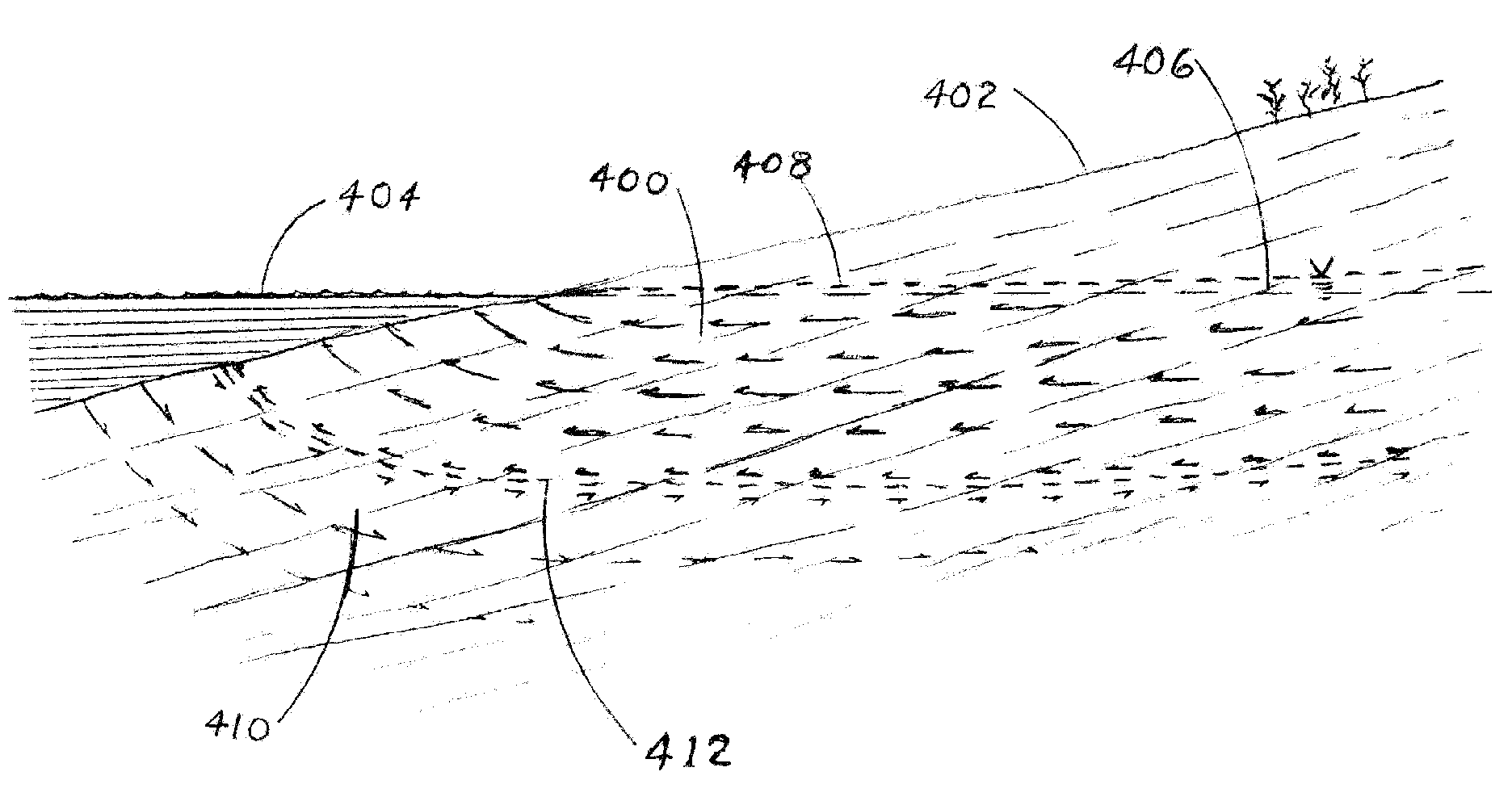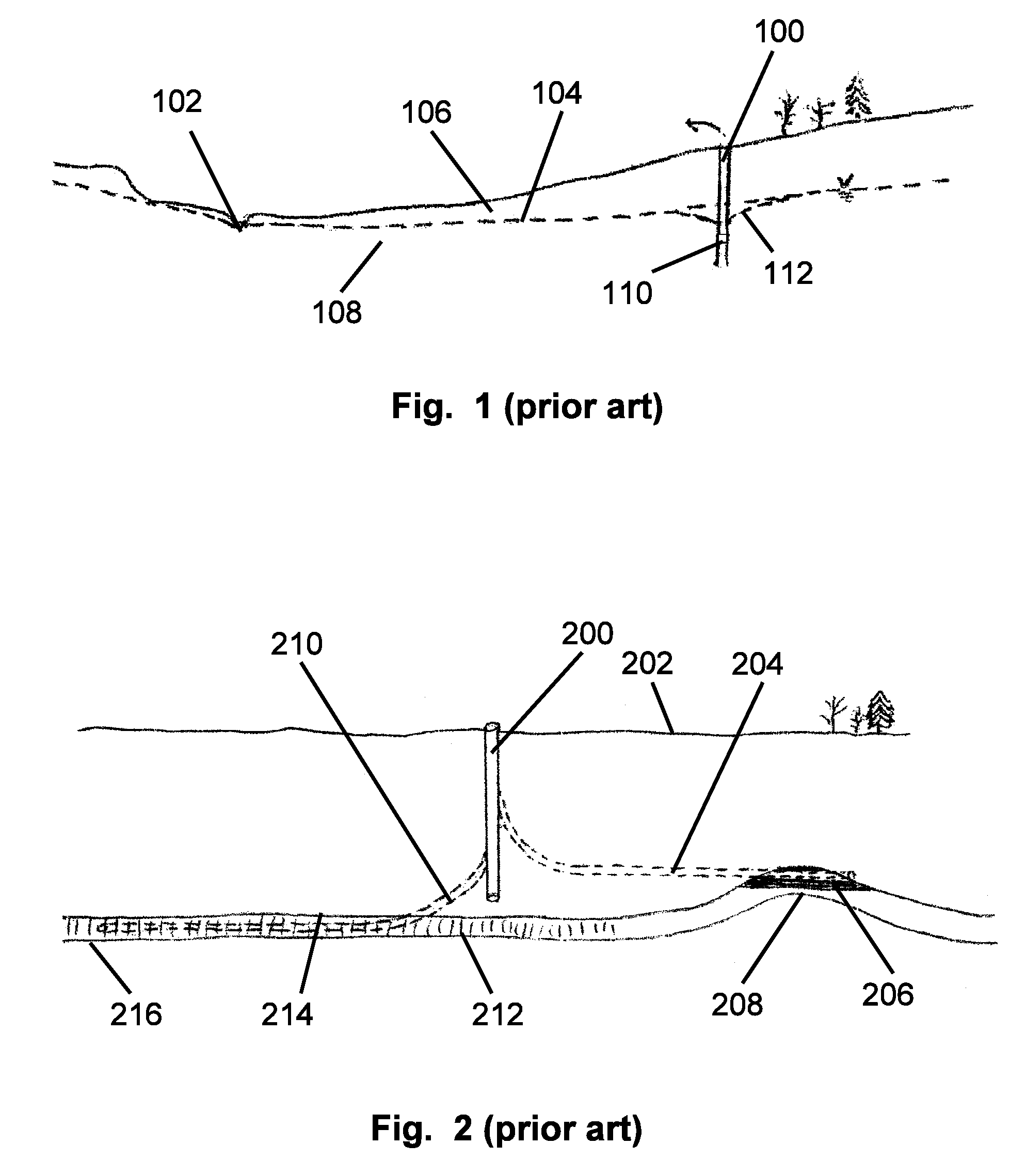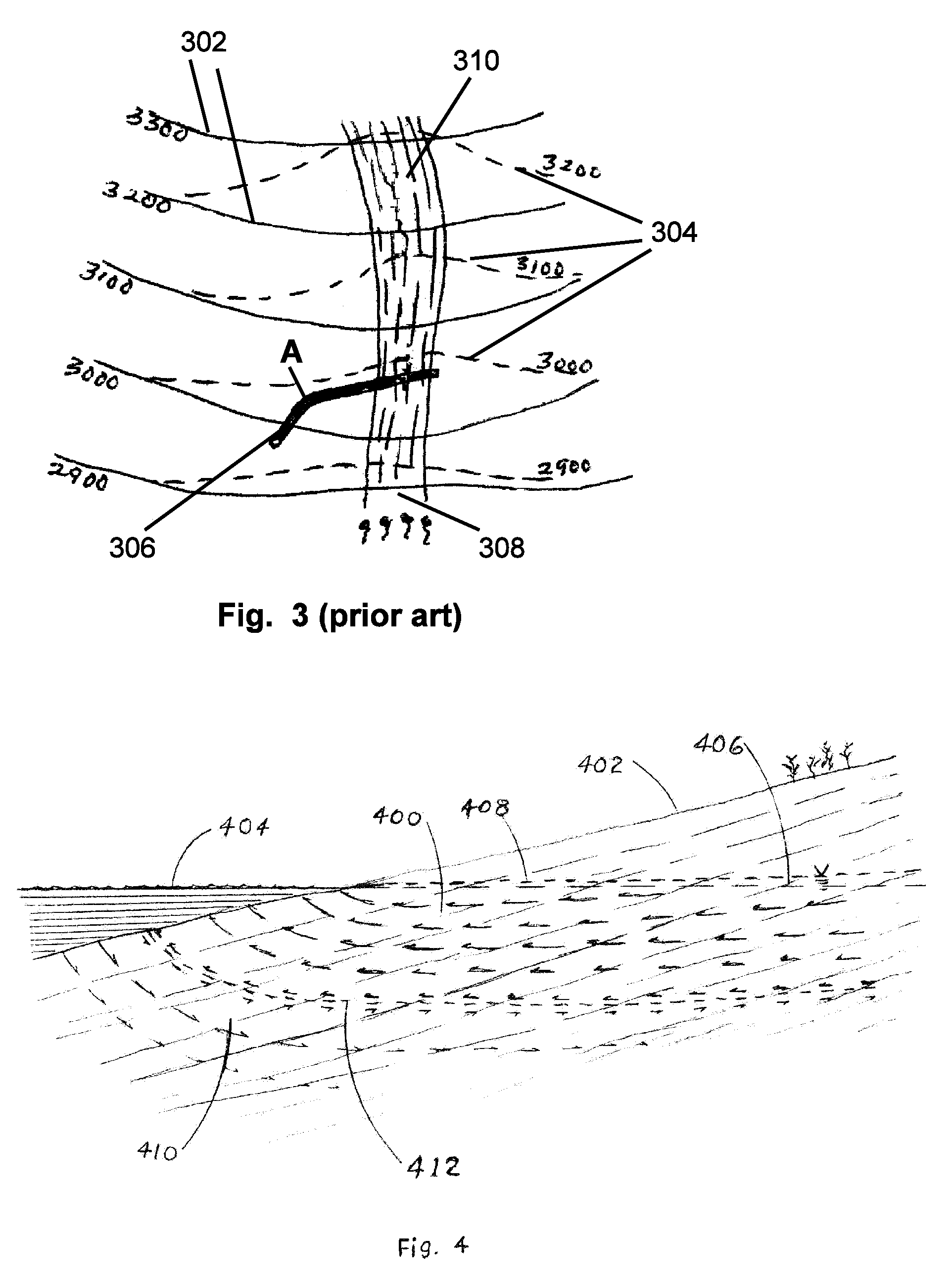Deviated drilling method for water production
a drilling method and water technology, applied in the direction of directional drilling, borehole/well accessories, artificial islands, etc., can solve the problems of high-level water table conditions, upward conduction and production of underlying salt water, prolonging the useful life of the well, etc., and achieve the effect of enhancing the stability of the drill hole walls
- Summary
- Abstract
- Description
- Claims
- Application Information
AI Technical Summary
Benefits of technology
Problems solved by technology
Method used
Image
Examples
Embodiment Construction
[0035]Maintaining potable water supplies for a burgeoning population is widely recognized as a problem, especially on islands in the sea that are hydrologically limited. Some of the vertical wells currently utilized in Hawaii for producing large yields for municipal and agricultural needs are becoming progressively contaminated, which necessitates abandonment of individual wells and ultimately, whole parts of the coastal aquifers, which are irreplaceable sources of fresh water. The reason for their failure is that generous producers have to be drilled too deeply into the fresh-water lens, and they produce from limited areas of the aquifers. These long-standing problems of water supply, leading to critical shortages of potable water, are developing and will become increasingly critical as the population increases.
[0036]The present invention provides a solution to this problem specific to the volcanic aquifers of the Hawaiian Islands and other coastal extrusive rocks. It comprises dri...
PUM
 Login to View More
Login to View More Abstract
Description
Claims
Application Information
 Login to View More
Login to View More - R&D
- Intellectual Property
- Life Sciences
- Materials
- Tech Scout
- Unparalleled Data Quality
- Higher Quality Content
- 60% Fewer Hallucinations
Browse by: Latest US Patents, China's latest patents, Technical Efficacy Thesaurus, Application Domain, Technology Topic, Popular Technical Reports.
© 2025 PatSnap. All rights reserved.Legal|Privacy policy|Modern Slavery Act Transparency Statement|Sitemap|About US| Contact US: help@patsnap.com



